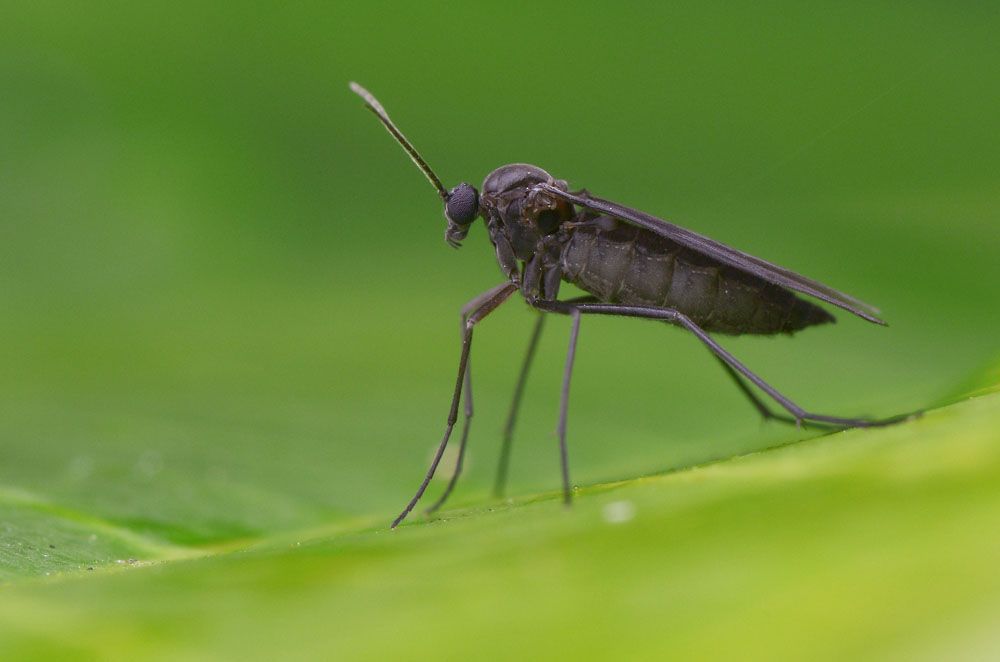
Fungus Gnats – Bradysia spp. – Lycoriella spp.
Fungus Gnats (Bradysia spp., Lycoriella spp.)
Common Name: Fungus Gnats
Latin Name: Bradysia spp., Lycoriella spp.)
Appearance:
- Adults are little grayish-black flies (about 1/8 inch long) with long legs and translucent wings. They are little flyers that emerge from potted plants, especially when they are rinsed.
- Eggs are little yellowish-white eggs 0.2 millimeters in length and 0.1 millimeters in width.
- Maggots of the darkwinged fungus gnat have white bodies and shiny black head capsules. The last body segment is lobed and facilitates the insect’s mobility.
- Mature larvae are around 5.5 millimeters long. Larvae (1/4 inch) have a sparkling black head and a thin, pale, transparent body. They thrive in damp, rich soils and eat root hairs, fungi, and other organic materials.
Host plants:
The roots of alfalfa, carnations, clover, maize, cucumbers, Easter lilies, geraniums, lettuce, nasturtium, peppers, rape, poinsettias, potatoes, soybeans, wheat, and organic materials are consumed by fungus gnat maggots.
Damages caused by Fungus Gnats:
Fungus gnats cause plant symptoms such as wilting, energy loss, poor growth, and yellowing. In severe infestations, a large proportion of the plants may be lost.
Life history and habits:
Darkwinged fungus gnat maggots have lately been found as major pests in greenhouses and mushroom cellars. They are also pests of houseplants. Several of these flies have commercial value. Darkwinged fungus gnats are most frequent in greenhouses throughout the winter and spring. Adults live for approximately a week, and each female lays 100 to 150 eggs. They are put in strings of 3 to 40 near plant stems at the top of the soil. Adults achieve maturity in about 14 days, creating a pupal case in the soil out of silk and debris. The pupal stage lasts around 3.5 days. Adults fly slowly, although they may run swiftly on the ground or remain still.
